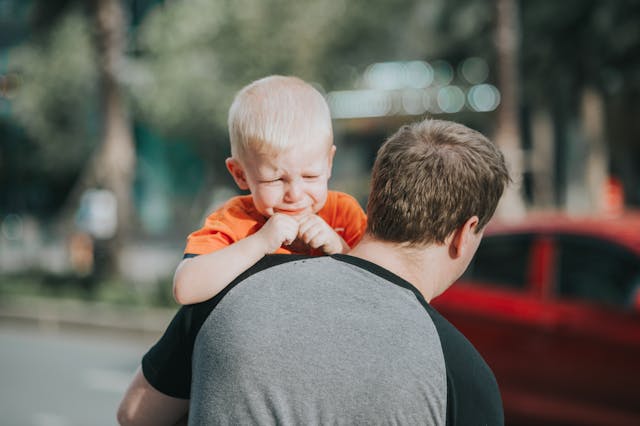Understanding Stranger Anxiety
Stranger anxiety is a typical developmental phase where infants show fear or discomfort when encountering unfamiliar people. It often begins around six to eight months, peaks between 12 and 15 months, and generally decreases by age two. This reaction is a sign that your baby is becoming more aware of their surroundings and forming strong attachments to familiar caregivers. The anxiety reflects their growing understanding of who is part of their close circle and who is not.
Signs of Stranger Anxiety
The signs can vary in intensity. Some babies may cry or cling tightly to a caregiver when approached by an unfamiliar person. Others might freeze or show distress through subtle behaviors, such as looking away. These responses are normal as babies seek comfort from their trusted caregivers in the face of new experiences.
Why Does It Happen?
The development of stranger anxiety is linked to important cognitive milestones, such as object permanence—the understanding that objects and people continue to exist even when not seen. This newfound awareness helps babies distinguish between familiar and unfamiliar faces, triggering fear of strangers. Evolutionarily, it acts as a protective mechanism, encouraging infants to stay close to trusted individuals.
Factors That Affect Stranger Anxiety
Several elements can influence how this anxiety manifests:
- Temperament: Naturally cautious or shy babies may show stronger reactions compared to those who are more sociable.
- Parenting Approach: How parents respond to the baby’s distress can impact the child’s comfort level with strangers. Supportive and calm behavior can help ease anxiety, while overprotectiveness may exacerbate it.
- Cultural Background: In societies where children are cared for by a wide range of people, they may show less fear when encountering new faces compared to babies raised in more isolated settings.
Managing Stranger Anxiety in Infants
While stranger anxiety is a normal stage, there are ways to help your child cope:
- Introduce Strangers Slowly: Allow your baby time to get used to unfamiliar people by gradually increasing the level of interaction. Start with brief exposures and build up as they grow more comfortable.
- Stay Calm and Reassuring: Babies can sense their caregiver’s emotions. Offering a calm and supportive presence can make them feel safer.
- Use a Comfort Item: A familiar toy or blanket can help provide a sense of security when meeting new people.
- Respect Their Boundaries: Avoid forcing interactions if your baby appears uncomfortable. Allow them to approach new individuals at their own pace.
Stranger Anxiety vs. Separation Anxiety
It’s important to distinguish stranger anxiety from separation anxiety. The former occurs when an infant is around unfamiliar people, while the latter involves distress from being away from a primary caregiver. These stages often coincide but address different aspects of emotional development.
Long-Term Effects
In most cases, stranger anxiety naturally fades as the child grows older. However, extreme or prolonged anxiety may suggest a predisposition toward social anxiety later in life. If concerns persist, seeking guidance from a child psychologist may be beneficial.
Cultural Perspectives on Stranger Anxiety
Cultural differences play a significant role in how stranger anxiety is experienced. For instance, in some communities where child-rearing is a shared responsibility, infants are exposed to various caregivers from a young age, which may lessen their fear of new faces. This cultural context shows how the environment can shape responses to strangers.
Supporting Your Baby’s Social Growth
Encouraging social interactions in a gentle, supportive manner can help reduce anxiety. Activities like attending playgroups or small family gatherings provide opportunities for infants to observe and engage with new people in a low-pressure setting.
The following post may interest you
Separation Anxiety in Babies: Causes and Management Tips
Source
https://onlinelibrary.wiley.com/doi/abs/10.1111/sode.12545
https://www.sciencedirect.com/science/article/abs/pii/S0147176705001100

